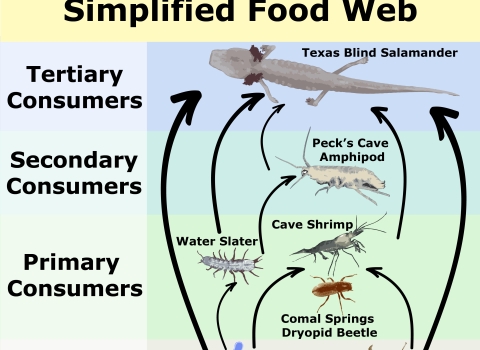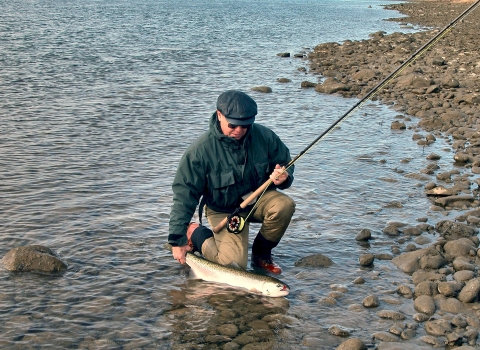Help is on the way to address unwelcome “neighbors” for wildlife, habitat, and nearby communities in Louisiana and Oklahoma. Known as orphaned wells, these neighbors are environmental and public safety hazards caused by past oil and gas activities. They litter the landscape with dilapidated and dangerous equipment, harm wildlife and their habitats, and jeopardize public health and safety by potentially contaminating groundwater or emitting greenhouse gases like methane.
Yet the reality is, millions of Americans across the country live within just one mile from one of these hazardous orphaned oil or gas wells, with an estimated 4,628 documented wells in Louisiana alone. Wells are considered orphaned if there is no viable operator of record and therefore no longer a viable party responsible for their upkeep and maintenance. These sites left behind by extractive activities prove harmful to families, threatening clean air, clean water, and healthy and sustainable environments.
The U.S. Fish and Wildlife Service put more than $13 million in Bipartisan Infrastructure Law Bipartisan Infrastructure Law
The Bipartisan Infrastructure Law (BIL) is a once-in-a-generation investment in the nation’s infrastructure and economic competitiveness. We were directly appropriated $455 million over five years in BIL funds for programs related to the President’s America the Beautiful initiative.
Learn more about Bipartisan Infrastructure Law funding to work to plug 175 orphaned oil and gas wells on six national wildlife refuges across Louisiana and Oklahoma.
President Biden’s Bipartisan Infrastructure Law delivers the largest investment in cleaning up abandoned oil and gas equipment from national wildlife refuge national wildlife refuge
A national wildlife refuge is typically a contiguous area of land and water managed by the U.S. Fish and Wildlife Service for the conservation and, where appropriate, restoration of fish, wildlife and plant resources and their habitats for the benefit of present and future generations of Americans.
Learn more about national wildlife refuge lands in American history.
In the U.S. Fish and Wildlife Service’s National Wildlife Refuge System:
- 59 orphaned wells will be plugged and remediated in Louisiana’s Upper Ouachita National Wildlife Refuge, which provides wintering habitat for thousands of waterfowl each year as well as habitat for alligators, forest interior songbirds, bald eagles, Louisiana black bear, the little known Rafinesque's big-eared bat, migrating shorebirds and the endangered red-cockaded woodpecker.
- Seven orphaned wells will be plugged and remediated in Louisiana’s Atchafalaya National Wildlife Refuge, where the scenic bayous, oxbow lakes, swamps, and bottomland hardwood forest offer great places to hunt, fish, bird watch, paddle, or just plain enjoy the scenery.
- 11 orphaned wells will be plugged and remediated in Louisiana’s Lacassine National Wildlife Refuge, which is strategically located on the boundary of coastal marsh and agricultural habitats, as well as at the southern end of the Mississippi and Central Flyways, making the refuge critically important to migratory birds, especially wintering waterfowl.
- Six orphaned wells will be plugged and remediated in Louisiana’s Black Bayou Lake National Wildlife Refuge, which is located within the city limits of Monroe and offers easily accessible opportunities for visitors to spend time in nature birdwatching, taking photos, paddling, hunting, fishing and hiking.
- 68 orphaned wells will be plugged and remediated in Louisiana’s D’Arbonne National Wildlife Refuge, which is bisected by 13 miles of Bayou D’Arbonne and is crisscrossed by numerous creeks, sloughs and oxbow lakes. Cypress swamps, bottomland hardwood, and upland forests complete the landscape that is habitat for a diverse group of plants and animals.
- 24 orphaned wells will be plugged and remediated in Oklahoma’s Deep Fork National Wildlife Refuge, established to protect and preserve bottomland hardwood forest and wetland habitats for the benefit of waterfowl, other migratory birds, fish, and wildlife species native to the area.
Not only are orphaned wells a threat to the wildlife and habitats inside these refuges, but they have far-reaching impacts on nearby communities – from Spencer to Lamkin, Baton Rouge to Monroe.
Overall, President Biden’s Bipartisan Infrastructure Law makes a $16 billion historic investment to go directly toward cleaning up legacy pollution. This year, Louisiana could benefit from up to $111 million in state grant funding to clean up orphaned oil and gas wells on state and private lands. That is on top of funding being allocated to plug environmental hazards in Louisiana and Oklahoma’s wildlife refuges.
And this funding provides benefits beyond the well site. It creates good-paying jobs that strengthen local economies, invests in disadvantaged communities consistent with the President’s Justice-40 initiative, and forges a strong working relationship between the Service and the states of Louisiana and Oklahoma.
In addition to plugging each well, the Service will work closely with the states on reclamation to ensure sites are restored for the benefit of wildlife and their habitats. And when this occurs, these beautiful and cherished National Wildlife Refuge System lands become safer for people and the wild neighborhoods in these communities.
These efforts to tackle legacy pollution, provided for by the Bipartisan Infrastructure Law, will have a tangible impact on outdoor recreation access in Louisiana and Oklahoma, they will conserve wildlife habitats across Deep Fork, Atchafalaya, Black Bayou Lake, D’Arbonne, Lacassine and Upper Oachita refuges and they will support a healthy environment for future generations. Work to clean up these hazardous sites is crucial as we advance the mission of the Fish and Wildlife Service and work to conserve fish, wildlife, plants and their habitats for the continuing benefit of the American people.





